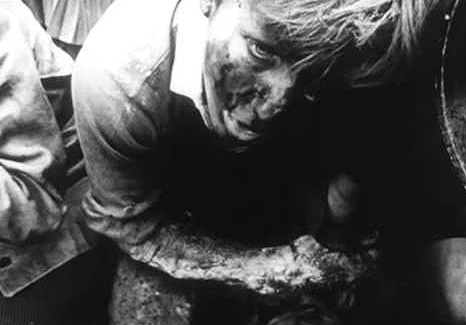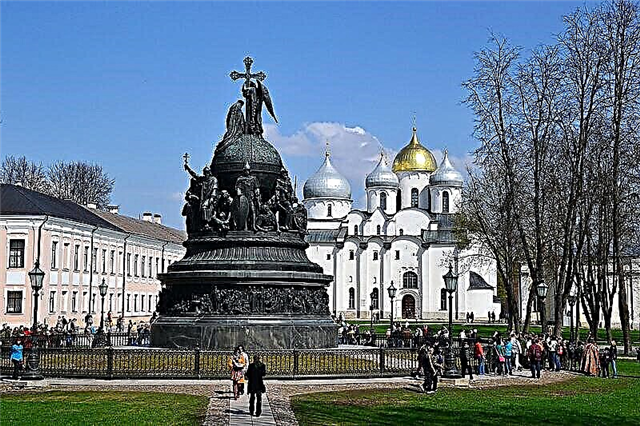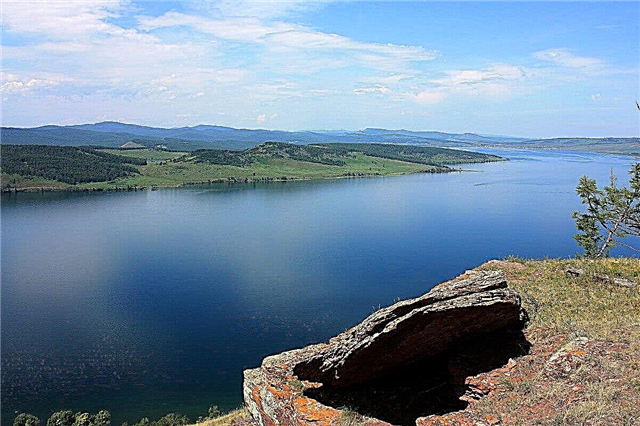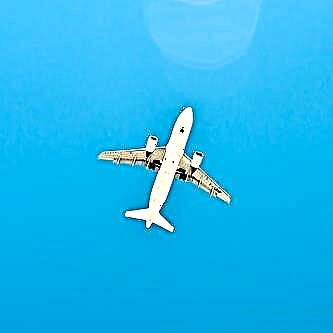The most populous city in Hungary is the capital Budapest. Another 7 cities boast more than 100 thousand inhabitants, the rest do not reach this mark. Low buildings prevail in the country, therefore, in terms of area, settlements are not so modest. The architecture in them is an interweaving of styles. This is due to the large number of wars and the need to periodically rebuild city blocks.
In Debrecen, Pecs and other cities there are objects included in the UNESCO World Heritage List. However, the best museums and walking places are still in Budapest. And Gyor and Miskolc are famous for their thermal springs: here you can not only visit the spa, but also improve your health. The surroundings of Bekescaba are best suited for ecotourism, and this despite the fact that the city remains an industrial center.
The largest cities in Hungary
List of the largest cities in terms of population in the country.
Budapest
The capital of Hungary is a union of three cities spreading on the banks of the Danube: Obuda, Buda and Pest. A mixture of styles can be traced in architecture: war and destruction contributed to the restructuring of the districts. Andrassy Avenue and Buda Fortress are included in the UNESCO World Heritage List. Other significant places of the city: Gellert mountain, Heroes' square, embankment. Dozens of sights are concentrated around them.
Population - 1,752,286 people (2019).

Debrecen
The cultural and economic center of Eastern Hungary. The territory of the city belongs to the Khorobad steppe, included in the UNESCO World Heritage List. A large church or Reformed cathedral is the symbol of Debrecen, as well as the largest Protestant temple in the country. The park area called Big Forest became a nature reserve in 1939. It includes a zoo, a botanical garden and an amusement park.
Population - 201 432 people (2019).

Szeged
The largest city in the southern part of the country. Its quarters are located on both banks of the Tisza River. To the border with Romania 20 kilometers, and to Serbia - 10. Cathedral Square is built up with religious buildings from different eras. Among them: Theological Institute, Episcopal Cathedral, Catholic boarding school. Tourists come not only for architectural beauty, but also to improve their health at the thermal springs of Szeged.
Population - 160,766 people (2019).

Miskolc
The hotel is located on the slopes of the Bükk mountain range near the confluence of the Sinwe and Shaillot rivers. Among the historical buildings, the Gyosgyor Castle stands out, having survived many battles. All religious sites in the area are open not only for believers, but also for tourists. The resort of Miskolctapolca belongs to the territory of the city. It is famous for its thermal springs and baths, which can be found in the natural Cave Bath.
Population - 154 521 people (2019).

Pecs
It is located at the foot of the Mecek Mountains. The city, which emerged on the site of a Celtic settlement, has a UNESCO World Heritage Site - an early Christian necropolis. The architecture shows a bias towards Turkish traditions, although there are different styles in the buildings of Pecs. Sightseeing: Gazi Qasim Mosque, the building of the country's first university, the remains of the Barbican bastion, Zholnayi quarter.
Population - 142 873 people (2019).
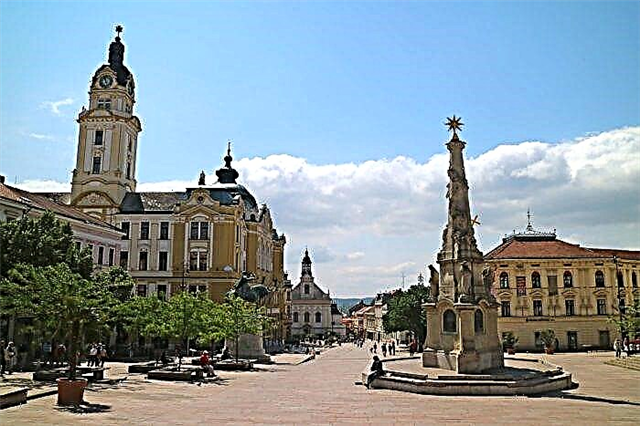
Gyor
Located halfway between Vienna and Budapest. It is called "the city of balconies" for the peculiarities of the architecture of low buildings. The main churches of Gyor are the Carmelites and St. Ignatius. The Bishop's Palace is famous for its Treasury. Thermal springs, sometimes flowing directly under the hotels, are used for medical and cosmetic procedures.
Population - 132,034 people (2019).

Nyiregyhaza
It was first mentioned in documents from the beginning of the 13th century. Then its name was shorter - Nyir. Representatives of the Catholic Church have opened a museum of their religion in the city. Churches of other Christian sects and a synagogue have been built in Nyiregyhaza. There is a museum in the suburbs that tells about the traditions, customs and culture of the Hungarians. The thermal lake Shoshtodjödfürd is nearby.
Population - 116 799 people (2019).

Kecskemet
The name comes from the Hungarian word for goat. This is due to local traditions in terms of animal husbandry. The city is located at the intersection of trade routes. Wine is made here. Kossuth Square is decorated with a medieval church and city hall. Kecskemet houses the country's only museum of Hungarian photography and a toy workshop with a permanent exhibition of products.
Population - 110 687 people (2019).

Szekesfehervar
In this city, 37 monarchs were crowned. Another 15 found their last shelter here. In the Middle Ages, it was in Szekesfehervar that the royal residence was located. The main square of the Old City is called Varoshkhaza. In its center is an orb crowned with a crown. In the Garden of Ruins, you can see the remains of a stone basilica. Several interesting museums have been opened, including an ethnographic and a pharmacy museum.
Population - 96 940 people (2019).

Szombathely
The oldest city in Hungary. The Savaria Museum has brought together archaeological finds from all over the area under one roof to tell the story of Szombathely, founded shortly before our era. Other attractions include the cathedral, the town hall, the canon's house, the ruins of the Temple of Isis and the Rococo Episcopal Palace dating from the 18th century.
Population - 78 407 people (2019).

Szolnok
Located 90 kilometers from the capital. The city was fought several times due to its strategic geographic location. In the middle of the last century, Szolnok began to develop as a resort. Sanatoriums and thermal baths were opened at them. The Franciscan Church, the Lutheran Church, the Hungarian Aviation Museum, the gallery housed in the building of the former synagogue are important city objects.
Population - 71,285 people (2019).

Erd
It is part of the Greater Budapest metropolitan area. Erd's specialization gradually changed: from agricultural to industrial. The ruins of Kutovara, a "dog's" castle, have been preserved in the vicinity. Representatives of noble houses came here to hunt. Nearby you can see a classic Hungarian estate with a church dating from the 17th century and a stud farm.
Population - 66 892 people (2018).

Tatabanya
From here to Budapest 55 kilometers, or about an hour by train. The districts of the city lie in a green valley surrounded by mountains. A coal deposit found in the vicinity gave impetus to the development of Tatabanya in the past. Now the population is switching to work in the service sector. The symbol of the city is the monument to the Turul bird. Ecotourists have chosen the routes to the Gereche and Vertesh heights, as well as to the Selim cave.
Population - 65 845 people (2019).

Sopron
City near the border with Austria. Around coniferous forests and vineyards. Different styles and eras intersect in the architecture of Sopron. Adjacent to the Roman forum and the medieval fortress wall, Gothic residential buildings, a synagogue and palaces built in the 19th century. The fire tower has been converted into a museum. Wine cellars regularly host tastings of local alcoholic beverages.
Population - 62 454 people (2018).

Kaposvar
Stands on the Kapos River. Historical buildings of the city are not empty. For example, the City Museum is housed in a 19th century mansion. Among the medieval buildings, the theater of Gergey Chiki arose, gravitating towards the Art Nouveau style. Fountains and benches are installed on the central street, and in the evenings it glows with electric lights. A balneological complex has been built near the thermal springs.
Population - 61 441 people (2019).

Veszprem
It is one of the oldest cities in Hungary. The banks of the Shed River, on which Veszprem stands, are covered with dense forests and tall thickets. In the central square there is a column of the Holy Trinity, otherwise called the "plague pillar". There is a large zoo and a botanical garden.During World War II, residents miraculously saved an openwork bridge from the Nazis. Lake Balaton is located 15 kilometers from the city.
Population - 59 738 people (2019).

Bekeschaba
The border with Romania runs 15 kilometers from the city. Despite the fact that industry is the backbone of the local economy, Bekescaba has a good environmental situation. This contributes to the development of ecotourism. Guests are offered not only to admire the nature of the region, but also to visit the workshops of artisans and craftsmen, the museum of the painter Mihai Munkachi, as well as the country's largest Evangelical Cathedral.
Population - 58 996 people (2019).

Zalaegerszeg
Austria and Slovakia are about 40 kilometers from here. The main square is decorated with a tulip-shaped fountain. The sculpture "Lamentation of Christ" is the most ancient monument of the city. It can be found near the north wall of the town hall. Vacationers in Zalaegerszege often visit the AquaCity thermal water park located in Slovakia. There are even special tours for one-day visits there. The resorts of Balaton are also nearby.
Population - 57 403 people (2019).

Eger
Balneological resort famous for its thermal springs. The beach and bathing center receives thousands of visitors every month. It has seven large pools surrounded by tropical plants. The local red wine produced under the name "Eger Bovine Blood" is also known outside the country. Fortress Day is celebrated in October. The holiday is accompanied by knightly tournaments, exhibitions and food festivals.
Population - 52 898 people (2019).

Nagykanizsa
Railway junction and industrial center of the south-west of the country. The György Turi Museum is unique, not only because of its collection, but also because of the features of the building. During its construction, the stones of the destroyed old fortress were used. The beauty of Lake Balaton is only 40 kilometers away. Sightseeing tours start there regularly. Although there are comfortable pensions in Nagykanizsa itself.
Population - 46 649 people (2019).

Dunaujvaros
The youngest city in Hungary appeared on maps in the 50s of the last century. One of the best family-friendly destinations in the country. In the Park of Sculptures, statues cast at a local enterprise are collected according to sketches of masters from other cities and countries. Street festivals of artists and musicians are constantly held. Children will love the play clubs, the zoo and the circus.
Population - 44 358 people (2018).

Hodmezovasharhei
Located in the valley of the Tisza River. Hodmezovasharhei joined the Slow City movement. Its supporters want to improve the standard of living by slowing down the urban rhythm. The bank building, the town hall, the main square are the iconic sights of the area. Economically, the city relies on industry, but its development has slowed down somewhat.
Population - 43 311 people (2019).

Cegled
City of the central part of the country. Fertile lands are spread around, so the focus on agriculture is clear. Sightseeing: Freedom Square with the statue of Lajos Kossuth and the Museum of Drums, the Catholic Church of the Holy Cross, the Lutheran Church, the Calvinist Church, next to which the Kossuth balcony is installed. A sanatorium has been opened in the suburbs near the thermal springs.
Population - 35,523 people (2018).

Baya
Occupies the left bank of the Danube. A large pier was built, and a bridge was thrown across the river. The region is famous for its religiosity. There are 15 churches in the district, most of which belong to the Catholic branch of Christianity. The Franciscan Monastery of St. Anthony, founded in the 17th century, is the main attraction of Baja. Several museums and art galleries operate.
Population - 34 788 people (2018).
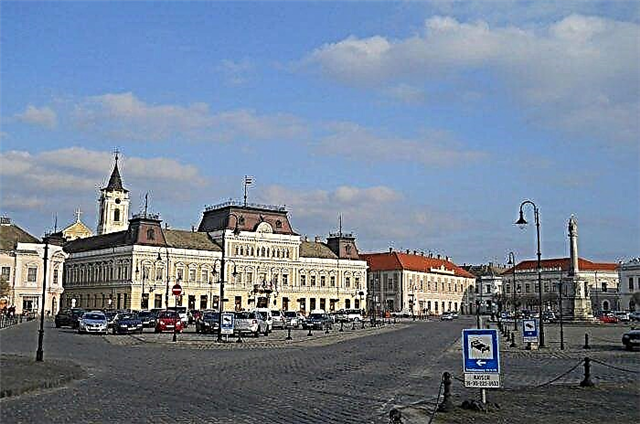
Salgotarjan
It is located on the slopes of Mount Cherkhat in the interfluve of Shalgo and Tarjan. The area is covered with picturesque forests, the terrain is mostly hilly. The ruins of an ancient fortress can be found in the suburbs. The main cathedral of Shalgotaryan is located opposite the local history museum. The main mining museum in Hungary is open in the city. Visitors can view the mine and equipment for mining.
Population - 33 579 people (2019).


